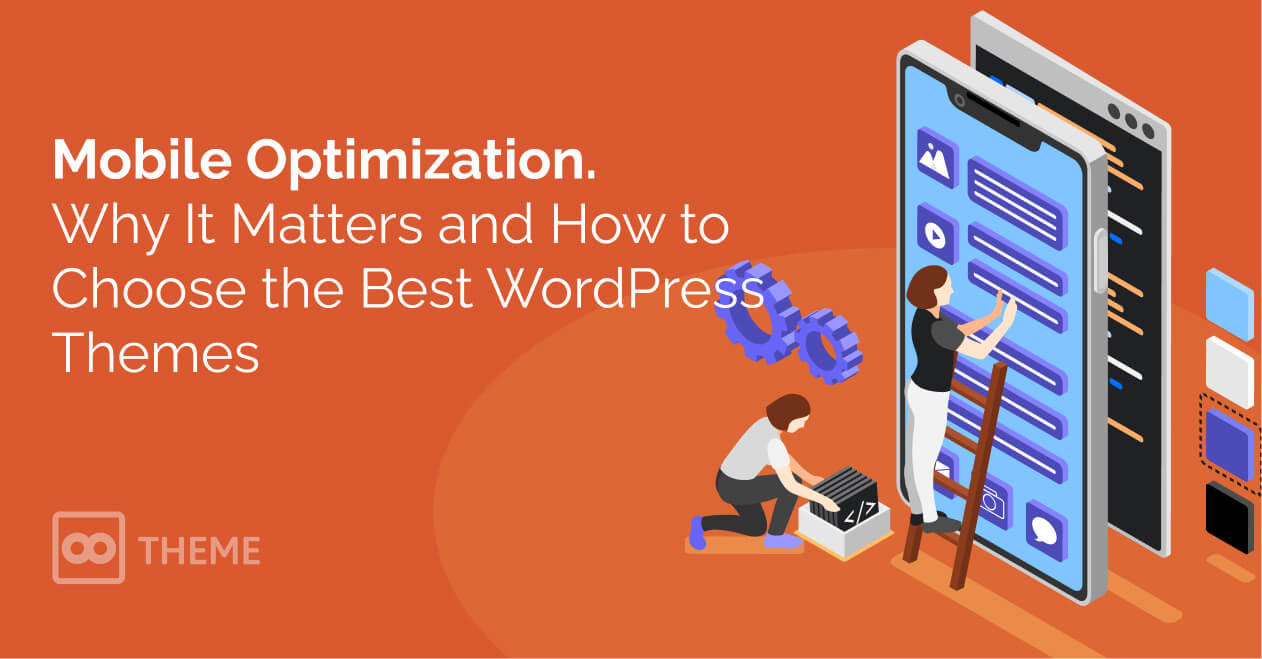
When creating a commercial website, you're likely aiming to connect with your target audience—which includes not only loyal customers but also potential ones you'd love to welcome. But have you considered how they're accessing your site? Data from various sources shows that most users now browse the web on mobile devices, like smartphones and tablets. This trend has been steadily growing for over a decade, meaning that mobile optimization is no longer optional—it’s essential for any new website on WordPress or other platforms.
In this article, we’ll explore what mobile optimization is, why it’s so crucial, and how to pick a pre-made theme that meets today’s mobile-friendly standards.
Let’s dive into some key stats to understand why mobile optimization matters so much today.
Over the past decade, mobile devices have completely changed how people access the internet. Back in 2012, just 10% of global web traffic came from mobile devices, with desktops making up almost 88%. But mobile usage quickly surged, surpassing 50% by 2017. Fast-forward to October 2024, and mobile devices now account for 60.4% of global internet traffic, reflecting a clear shift toward mobile browsing worldwide.
Regional differences add interesting context: in Africa, mobile web traffic exceeds 69%, while North America sits around 48.5% as many users still prefer desktops. In the U.S., mobile and desktop usage are more balanced, but the global trend shows a strong lean toward mobile browsing, driven by the growing availability of smartphones and mobile internet.
This shift hasn’t just changed how people browse—it’s also affected search engine algorithms. Back in April 2015, Google’s “Mobile-Friendly Update” (also known as “Mobilegeddon”) started ranking mobile-optimized sites higher on mobile searches, encouraging responsive design and easier navigation on smaller screens. Sites without mobile-friendly designs found themselves lower in the rankings on mobile searches.
Then in 2018, Google launched “Mobile-First Indexing,” making mobile versions of sites the default for indexing and ranking, further underscoring the importance of mobile optimization for both mobile and desktop SEO. By 2024, the quality of a site’s mobile optimization is critical for Google rankings, with mobile-first indexing becoming standard. This means Google primarily evaluates websites based on their mobile version, so if a site isn’t optimized, its ranking is likely to suffer.
Several parameters impact mobile optimization, with Core Web Vitals playing a major role:
Improving these metrics creates a better user experience, which in turn positively impacts user behavior, like time spent on the site and return visits, and helps boost search rankings. Sites that meet Core Web Vitals requirements can expect better placement on Google.
And this is crucial for any commercial website, given that most users click on links from the first page of search results. The top result gets about 39.8% of clicks, with the second and third results drawing 18.7% and 10.2%, respectively. By the time you reach the tenth position, the click rate drops to 1.6%. Page two and beyond receive less than 1% of clicks per position, underscoring just how important it is to rank on page one—a goal that mobile optimization greatly supports.
Mobile optimization and responsive design both aim to improve user experience on mobile devices, but they tackle this goal in different ways.
Mobile optimization is a set of adjustments made to enhance a website's performance on mobile devices, adapting content and functionality to the smaller screens of smartphones and tablets. It includes elements like:
Responsive design, on the other hand, is a web design approach that automatically adjusts a website's layout to fit various screen sizes. It ensures that a website looks good on any device—desktop, tablet, or smartphone—by adapting elements like column width, font size, and images. However, while responsive design ensures a consistent appearance across devices, it doesn’t fully address the functional needs of mobile users.
Mobile optimization often includes responsive design but goes further by focusing on usability and functionality for mobile visitors.
8Theme's ready-made WordPress themes provide powerful options for mobile optimization:
8Theme's WordPress themes are rigorously tested with tools like Google’s Mobile-Friendly Test and mobile emulators to ensure seamless adaptability. In the 8Theme catalog, you’ll find a variety of ready-made templates for WooCommerce stores, blogs, corporate sites, and more—all built with the latest mobile standards in mind. Plus, 8Theme frequently updates its themes, adding new mobile optimization features and improvements.
In today’s digital landscape, a website without mobile optimization will struggle to succeed commercially. To truly connect with users, it’s essential to consider that many will be browsing from a smartphone. Choosing a WordPress theme designed for mobile optimization is a smart first step—and 8Theme offers plenty of options to help you get started. Explore our catalog to discover templates with sleek, modern designs and flexible functionality that can take your online business to the next level.

